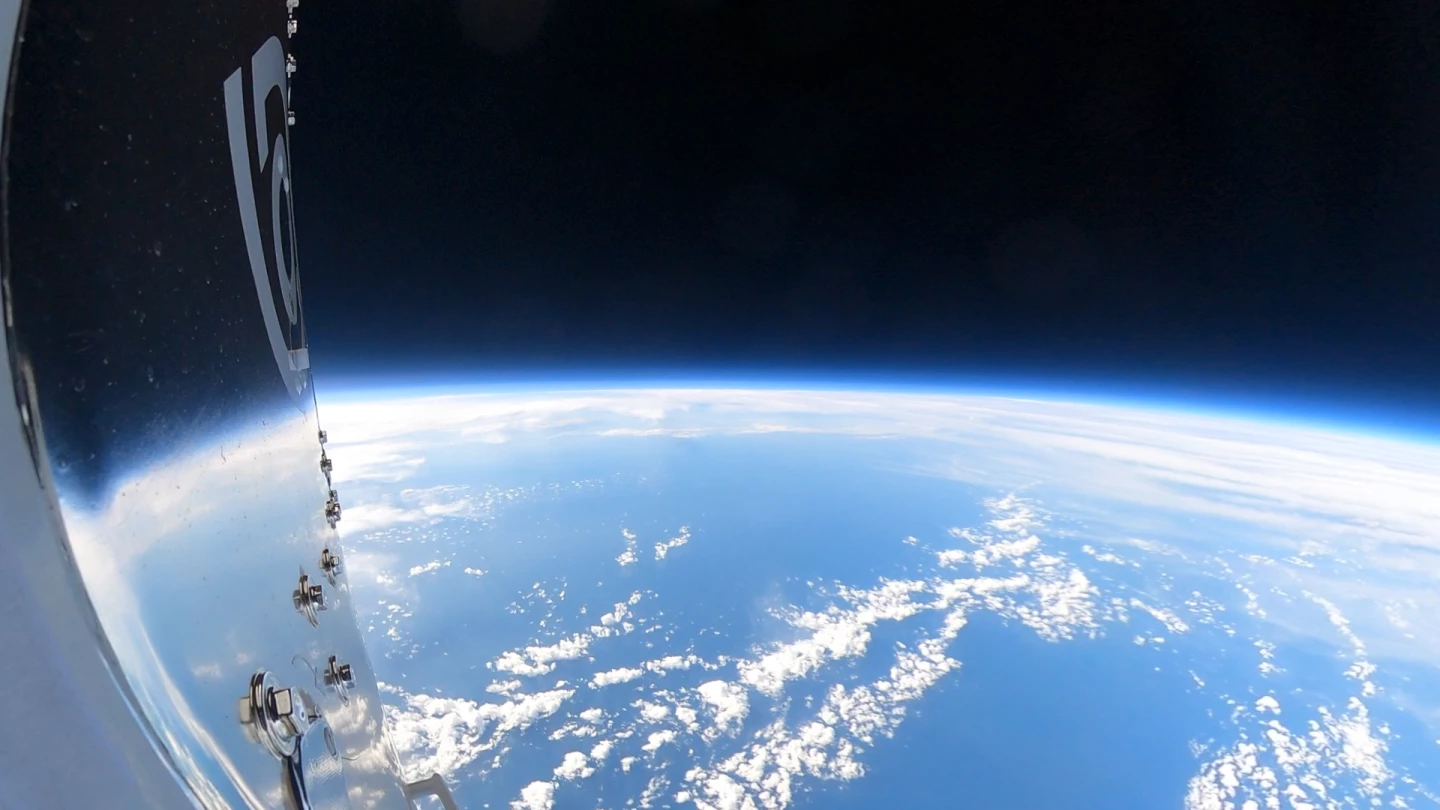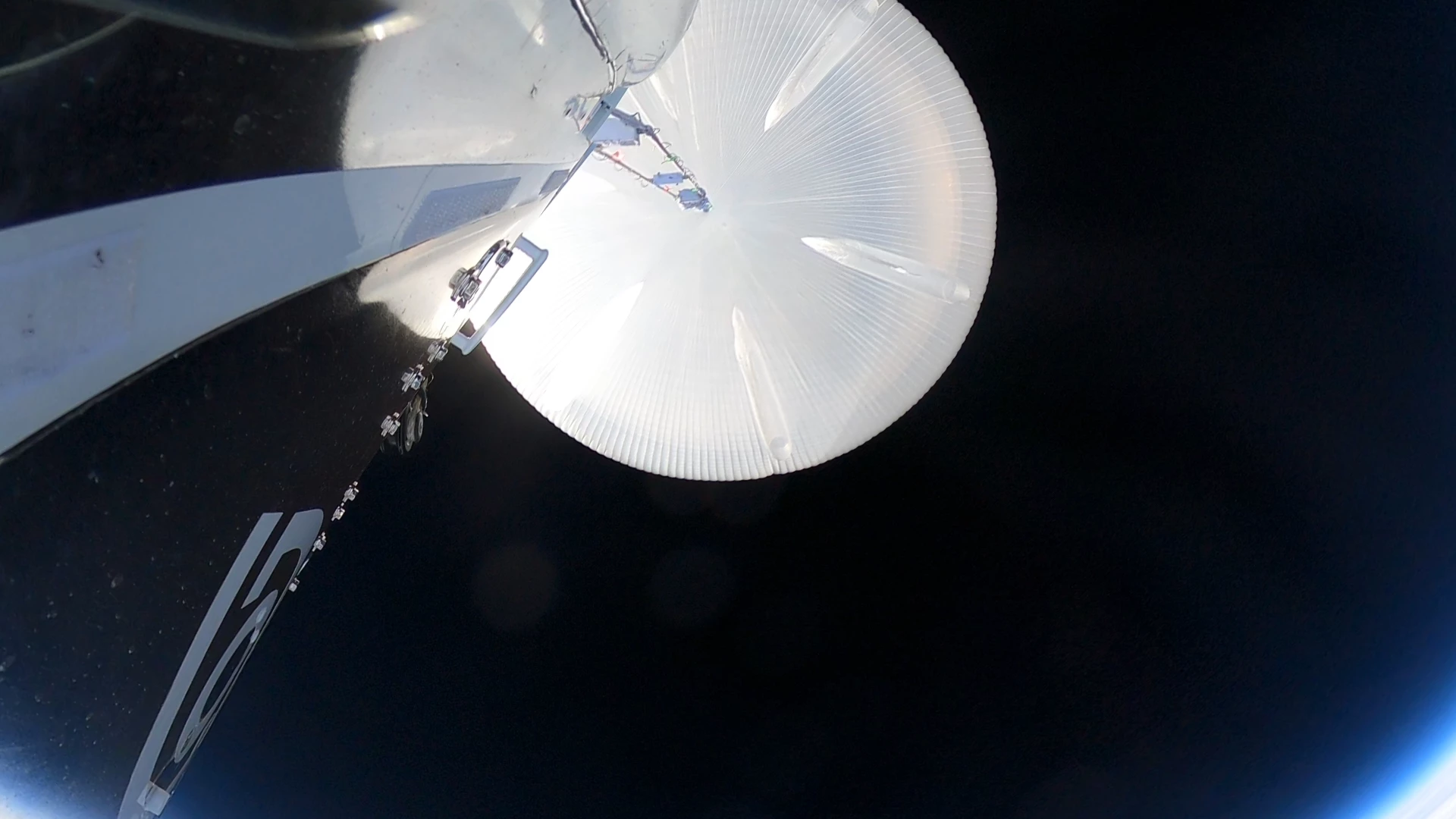We're now one step closer to seeing tourists making balloon flights to the edge of outer space. Just last week, Florida company Space Perspective sent a balloon-lifted test capsule to the outer limits of our planet's atmosphere, followed by a successful splashdown landing.
Space Perspective first caught our attention four years ago, when the Cape Canaveral-based startup announced its plans to make sightseeing balloon flights to an altitude of 100,000 feet (30,480 m).
Although the giant hydrogen-filled SpaceBalloon and its eight-passenger Spaceship Neptune pressurized capsule wouldn't be in outer space at that height, they would be above 99% of the atmosphere. At that altitude, the curvature of the earth and the blackness of outer space are clearly visible.

Each flight would take two hours to reach altitude, followed by two hours of sightseeing, followed by another two hours to descend. In order to do the latter, gas would slowly be released from the balloon.
While all of this might sound a bit pie-in-the-sky-ish (no pun intended), Space Perspective did proceed to unveil an actual test version of the capsule last year. Named Spaceship Neptune-Excelsior, it was described as being representative of "what the company will be flying once commercially operational" – although it lacked the final model's planned cushy interior lounge.
The company also announced that it was nearing completion of the Marine Spaceport Voyager, a ship from which the flights will be launched, and which will retrieve the capsule and balloon from the ocean after splashdown upon return. That brings us to last week's flight.

On Sept. 15th, the uncrewed Neptune-Excelsior (yes, and the balloon) successfully lifted off from the deck of the now-complete Marine Spaceport Voyager, off the coast of St. Petersburg, Florida. The capsule proceeded to reach the target altitude of approximately 100,000 feet, after which it performed a controlled descent back to its liftoff area. It then safely made a splashdown landing, and was retrieved by the ship's crew.
According to Space Perspective, the six-hour flight had a number of important highlights.
Among other things, it was the first use of a unique four-roller mechanism that was utilized to raise the balloon off the deck of the ship for liftoff. It also provided a real-world test of the capsule's thermal control system (which will keep passengers from freezing) along with the balloon's hydrogen lift/descent technology, and the mission control center's proprietary software and communication systems.

"This flight successfully demonstrated the extraordinary accessibility of Spaceship Neptune's spaceflight experience with its gentle ascent, descent and splashdown, a critical step in opening space up to more people than ever before possible," says Jane Poynter, Founder of Space Perspective.
Plans call for crewed test flights to commence in coming months, followed by the first commercial flights of Spaceship Neptune sometime in 2025. And should you be wondering, a ticket will set you back US$125,000.
You can see the test capsule's historic liftoff in the video below.
Source: Space Perspective











